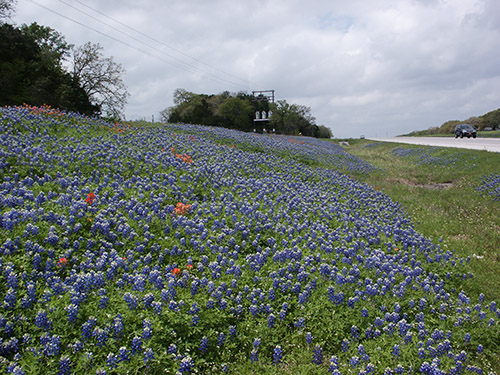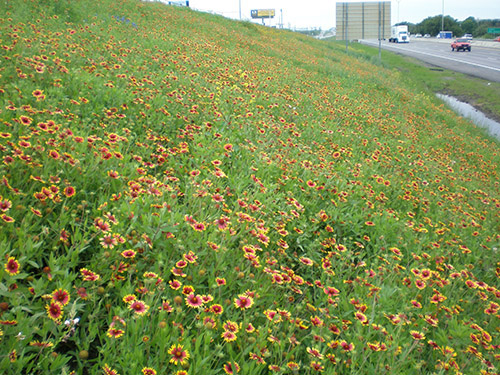Texas is home to more than 5,000 species of wildflowers. From bluebonnets to Indian paintbrush, the flowers that paint the Texas landscape grow year after year, despite the sometimes harsh weather conditions throughout this vast state. The Texas Department of Transportation (TxDOT) ensures the survival and spread of the flowers along our highways.
In 1932, 15 years after TxDOT was organized, the first landscape architect was hired. His job was to maintain, preserve and encourage wildflowers and other native plants along rights of way. Within two years (1934), the department had rules in place that delayed mowing until the spring and early summer wildflower seasons were over. The original mandate remains today and has expanded into the vegetation management system now in place. Delaying the mowing helps to ensure that the plants have spread their seeds for the next season before TxDOT has a crew mow.
Dennis Markwardt, vegetation management section director at TxDOT's Maintenance Division (Austin), shared how he developed his extensive experience and knowledge of the wildflowers in his 29 years with the department: "The wildflower program brings in thousands and thousands of tourists every year," Markwardt says. "If you go out to the Hill Country and try to get a hotel on a weekend during wildflower season, you won't find any available. It draws people from all across the state and country."

Ranging in color from bright oranges and yellows to subtle pinks and blues, wildflowers provide a vibrant background to Texas roads and rights of way. Beautiful as they are, these hardy flowers are also very practical, serving as groundcover, stabilizing the soil and crowding out less desirable vegetation.
Today, our crews use a variety of maintenance techniques to encourage the growth of our wildflowers. One technique used is strip mowing (mowing the first 15 feet of right of way and cleaning up intersections for safety), which allows most of the wildflowers to continue to bloom. TxDOT buys around 30,000 pounds of seeds every year and sows them.

"When we choose flowers, we look for ones that will grow in the area and are commercially available," Markwardt says. "It all depends on the area; we don't plant very many flowers. If someone donates seeds, we'll go spread those, or we'll just go highlight certain areas that are visible. Across the state, we preserve what we have by regulating herbicides and mowing patterns. The first mowing isn't until around the first of June, and by then the wildflowers have already seeded."
When Markwardt was a student at Texas A&M University, he passed by a highway construction project with vegetation work going on. His interest in the field was sparked, and he later earned a degree in range science and management, basing his work on doing this same vegetation work. After college he worked for the Texas A&M Transportation Institute for a year and has been at TxDOT ever since.
Wildflowers usually start germinating from late September until November. Markwardt says they then bloom around Easter. "Depending on rain, sometimes they last until June," he says. "The first flowers you'll see are winter annuals like bluebonnets, and then you'll see the perennial ones a month or so later."
When buying the seed, product availability plays a huge part. "Last year we could barely buy any bluebonnets because of floods," Markwardt says. "We plant bluebonnets all the way from Lorena to the state line with Oklahoma."
In addition to the Wildflower Program, TxDOT also participates in the Monarch Butterfly Support Program along I-35. Markwardt says the efforts of the Wildflower Program have always helped in aiding the monarch butterflies in their travels south and back when it's time. "We've always supported the monarchs. They're out of the state by the time we mow, and we have a lot of milkweed in our rights of way," Markwardt says. "As a matter of fact, we've put some Monarch WayStations at our Bell and Hill County rest areas, and we're trying to set up pollinator areas at these stations."
Information on wildflowers can be found online.
Jake Smith
I-35 Public Information Officer
254-867-2705
Contact My35